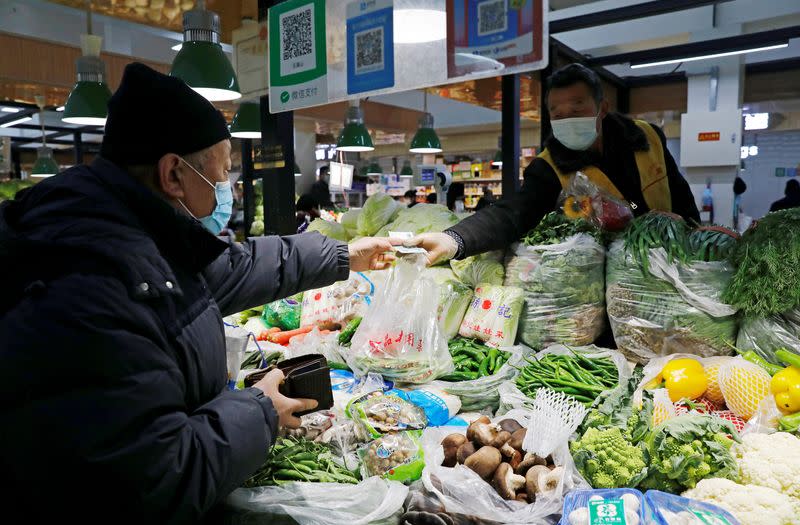A rise in food costs pushed China’s consumer prices up in September at the fastest pace since April 2020, official data showed on Friday.
The news is not great for bank and finance chiefs, given it limits the scope for more policy easing to prop up a faltering economy hit by Covid restrictions and a property sector slump.
The consumer price index (CPI) rose 2.8% from a year earlier, quickening from a 2.5% increase in August, National Bureau of Statistics (NBS) data showed on Friday. It was largely in line with forecasts in a poll of analysts.
Consumer inflation accelerated as food prices rose 8.8% on year from a 6.1% gain in August. Pork prices leapt 36% from 22% growth a month prior and vegetable prices jumped 12% from a 6% rise previously.
Underlying inflation remained much more modest, however, with core inflation – which excludes volatile food and energy prices – at 0.6% versus 0.8% in August.
On a month-on-month basis, the CPI grew 0.3% after a 0.1% fall in August, also supported by a rise in monthly pork price inflation.
ALSO SEE:
‘We Want Freedom’: China Wipes Xi Protest Footage Off the Web
Producer Prices Flat, Covid Lockdowns
The producer price index (PPI) grew at the slowest pace since January 2021, rising 0.9% year-on-year from 2.3% growth a month earlier, and compared with a forecast of 1.0%.
Analysts had expected producer inflation to pull back largely due to lower oil prices, with factory surveys suggesting companies were passing on some savings to customers in order to boost flagging sales.
The world’s second-largest economy barely grew in the June quarter and has struggled to regain traction amid protracted pandemic restrictions, a severe slump in the property market and softening exports.
As of October 10, some 36 cities which make up nearly 14% of China’s population and close to 20% of GDP, were implementing various levels of lockdowns or some kind of district-based control measures, Nomura said in a research note.
With strict pandemic curbs likely to stay in place for some time, economists expect policymakers to roll out more monetary and fiscal easing to support the recovery, though they will be cautious amid worries over capital flight.
Other major economies continue to aggressively raise interest rates and the yuan is already hovering around 14-year lows.
The International Monetary Fund on Tuesday cut its 2022 and 2023 economic growth forecasts for China to 3.2% and 4.4%, respectively, saying the frequent lockdowns under the country’s zero-Covid policy have taken a toll.
- Reuters with additional editing by Jim Pollard
ALSO SEE:
Chinese Developers on Hold Till Party Makes its Big Decisions
Can China’s New Leaders Transition From Investment-Led Growth?
























